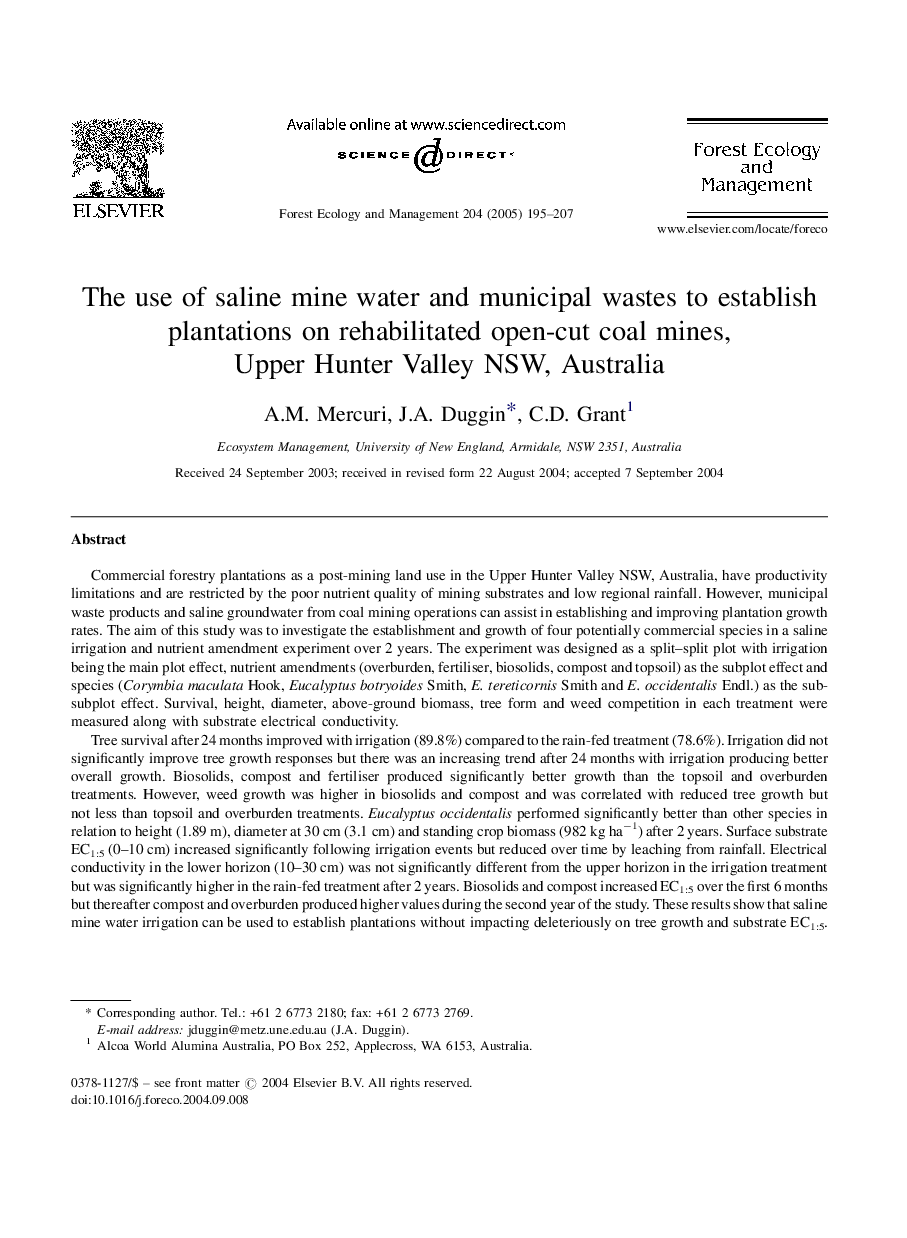| Article ID | Journal | Published Year | Pages | File Type |
|---|---|---|---|---|
| 9620527 | Forest Ecology and Management | 2005 | 13 Pages |
Abstract
Tree survival after 24 months improved with irrigation (89.8%) compared to the rain-fed treatment (78.6%). Irrigation did not significantly improve tree growth responses but there was an increasing trend after 24 months with irrigation producing better overall growth. Biosolids, compost and fertiliser produced significantly better growth than the topsoil and overburden treatments. However, weed growth was higher in biosolids and compost and was correlated with reduced tree growth but not less than topsoil and overburden treatments. Eucalyptus occidentalis performed significantly better than other species in relation to height (1.89 m), diameter at 30 cm (3.1 cm) and standing crop biomass (982 kg haâ1) after 2 years. Surface substrate EC1:5 (0-10 cm) increased significantly following irrigation events but reduced over time by leaching from rainfall. Electrical conductivity in the lower horizon (10-30 cm) was not significantly different from the upper horizon in the irrigation treatment but was significantly higher in the rain-fed treatment after 2 years. Biosolids and compost increased EC1:5 over the first 6 months but thereafter compost and overburden produced higher values during the second year of the study. These results show that saline mine water irrigation can be used to establish plantations without impacting deleteriously on tree growth and substrate EC1:5. However, further research is required to determine whether growth rates will reach a commercial standard and that the long-term impacts of using saline irrigation water are avoided.
Keywords
Related Topics
Life Sciences
Agricultural and Biological Sciences
Ecology, Evolution, Behavior and Systematics
Authors
A.M. Mercuri, J.A. Duggin, C.D. Grant,
